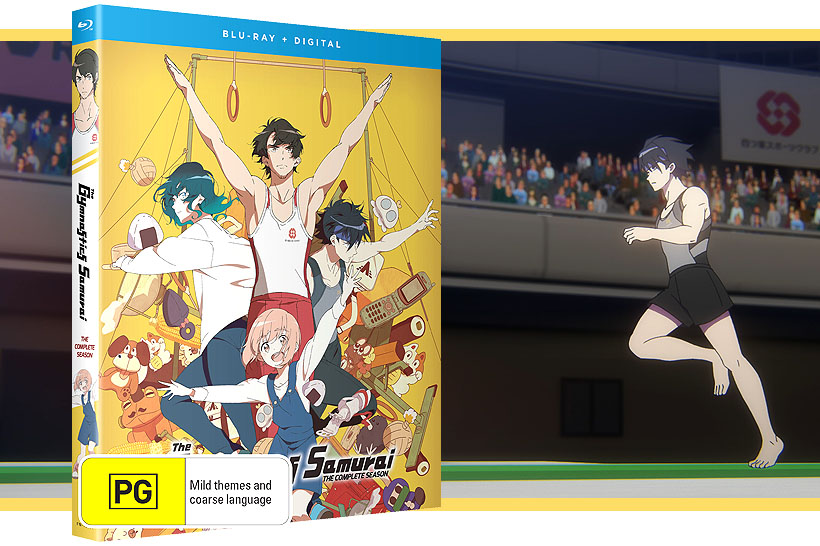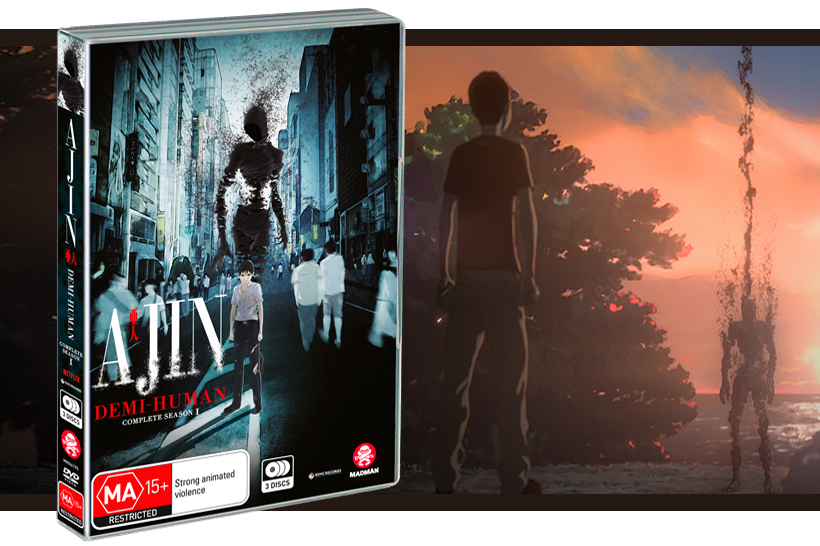Nagara, Nozomi, and their fellow high school classmates find themselves trapped in a deep, dark void when their school building crosses into another dimension. While stuck in the school, the students discover something extraordinary – that they have begun to develop fantastical abilities. As their powers awaken, the students start exploring the strange reality they have found themselves in and begin travelling across dimensions to search for a way home.

Sonny Boy is an original anime by studio Madhouse from director/creator Shingo Natsume (director of One-Punch Man and Boogiepop and Others) that is so utterly unique and odd that I urge anyone whose interest was piqued by the previous synopsis to stop reading this review, avoid any other discussions of the anime, and watch the first episode as soon as possible. Sonny Boy is extremely experiential – getting lost in the flow of the series and simply experiencing its off-kilter but understated vibes, its visual styles, and the increasingly peculiar environments and situations the characters find themselves in, is a large part of what gives the anime its appeal. In an effort to not spoil a large part of what makes Sonny Boy so intriguing and entertaining to watch, this review will be particularly light on descriptions of the narrative and the characters, in the hopes that you will be interested enough to go check it out for yourself.
What I will say is that I quickly fell in love with Sonny Boy’s characters, particularly Nagara’s quietness and inability to communicate, Nozomi’s straightforward attitude that acts as the perfect foil for Nagara, Mizuho and her devotion to her cats, Rajdhani’s intensity and wisdom. It is through these characters and their displacement and subsequent teamwork as they try to figure out the way home, that Sonny Boy shines. Through this displacement, Sonny Boy crafts a narrative about the devastation of disconnection, the feeling of living one’s life as a drifter, and the perseverance and sacrifice necessary to grow beyond such things to form meaningful connections – all amidst a backdrop of superpowered teens travelling through a sideshow off dimensions as they search for a way home.

The result is that Sonny Boy feels so much like an odyssey, with the characters adrift as they explore and learn about their surroundings and each other. The mysteries of the worlds they find themselves in, the islands, the deserts, train stations, cliffs, domes covered in stain glass windows, as well as the rules that govern these worlds, are ever-changing and fascinating. The eclectic nature of this kind of world hopping, the revelation of new rules and the abilities of the students, and the strange passage of time throughout the series dances between incomprehensible and naturally intuitive.
This balance is indicative of the overall vibes of Sonny Boy – one moment characters are having a heartfelt discussion about whether it is better to chase after the things you want or stay in place and watch from afar, and the next a student flies into frame feet first or the main cast are listening to a long monologue about a monkey baseball league (not a joke). Sonny Boy doesn’t tend to over explain itself, it doesn’t lampshade its every decision or explain in excruciating detail the abilities of all of its characters, it just lets these things fall where they may and leaves it up to the viewer to decide how much to engage with it. And I really respect that about it. I found the best way to enjoy Sonny Boy and all of its oddities was to just let yourself drift down the river of twists, turns and enjoy the surprises the series has to offer on its own terms and within its own context.
This release of Sonny Boy has some neat special features in the form of making of featurettes titled “Sonny Boy Shingo Natsume Master Class” and “Sonny Boy Behind the Scenes”. The two videos contain interviews with the director, editors, animators, and sound editors (and much more) of Sunny Boy, and discuss the process of making the series, and the choices they made during its production. While the two featurettes contain some overlapping content (with the behind the scenes one being the best version as it runs longer and has extra stuff) it’s still an intriguing watch and reveals a lot about the technical and artistic choices made while the team was working on Sonny Boy.
Thanks to this we get insight into the decision to have different animation directors in charge of each episode (rather than the standard overall chief animation director for the series) to create varied compositions throughout the series, as well as the choice to use sound effects (ocean waves, cicadas, etc.) throughout the majority of the series while saving background music for key moments. We also learn about how the Director purposefully didn’t include character monologues, preferring a character’s mindset to be communicated through their expressions and what they don’t say out loud. These featurettes provided a really interesting and worthwhile look into the series, that showcased all the effort and care that went behind crafting a show like Sonny Boy.

The Director of Sunny Boy stated in an interview how different the series was to anything currently in the anime space, and that he suspected only 2-3 per cent of people would probably enjoy the series. I am that 2-3 percent. I loved Sonny Boy and its winding odyssey of peculiarities and troubled kids, its emphasis on perseverance when faced with the unknown, its confusing descriptions of monkey baseball, and that one kid whose power is called “sweet water” (no, I will not elaborate). Sunny Boy will chuck a lot of oddities your way, but it is full of heart and passion, and if you let it carry you down its winding river of twists and turns and keep an open mind, it has a lot to offer.
A review copy was provided by Crunchyroll to the author for the purpose of this review.
Sonny Boy © Sonny Boy committee





